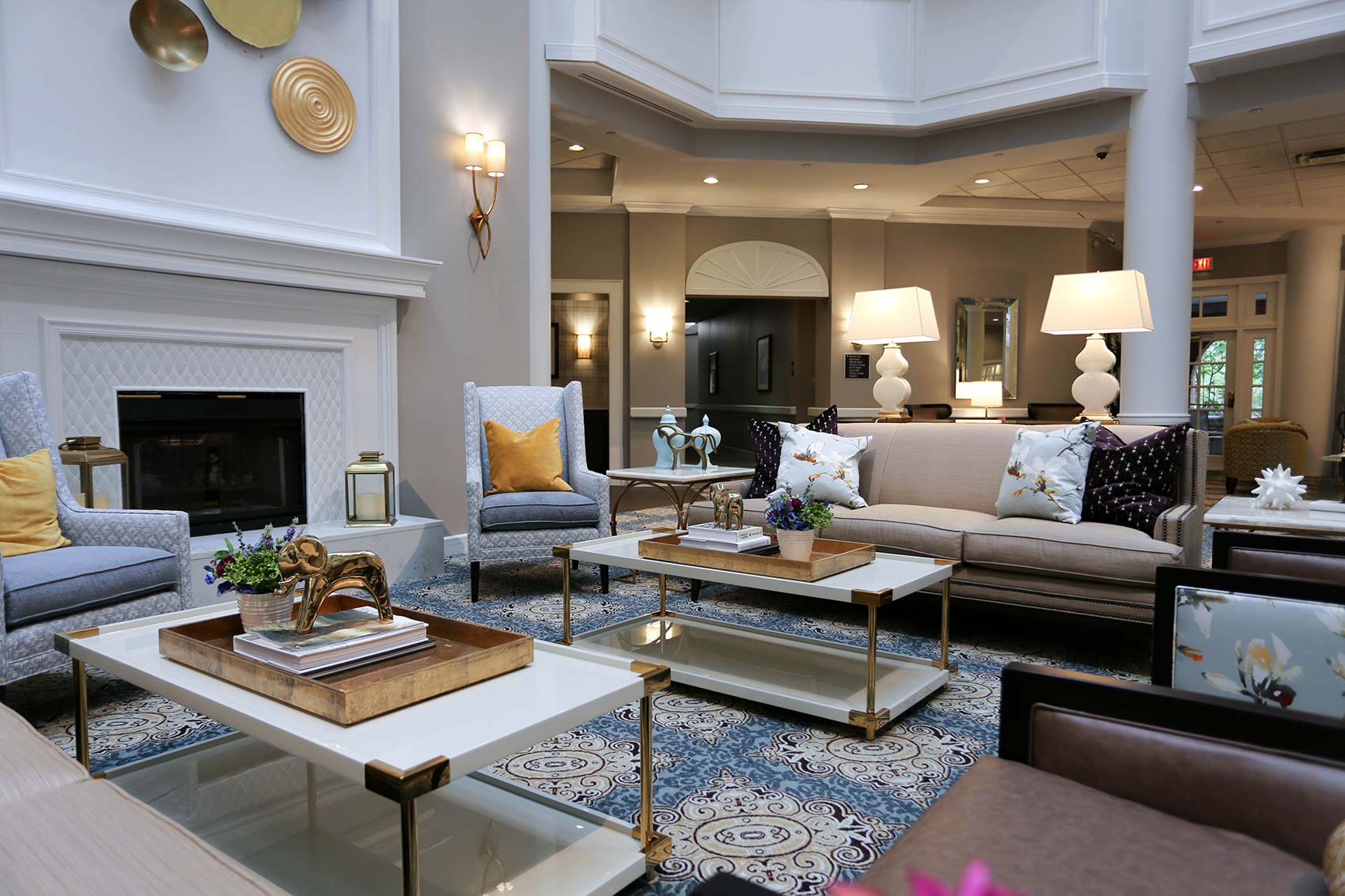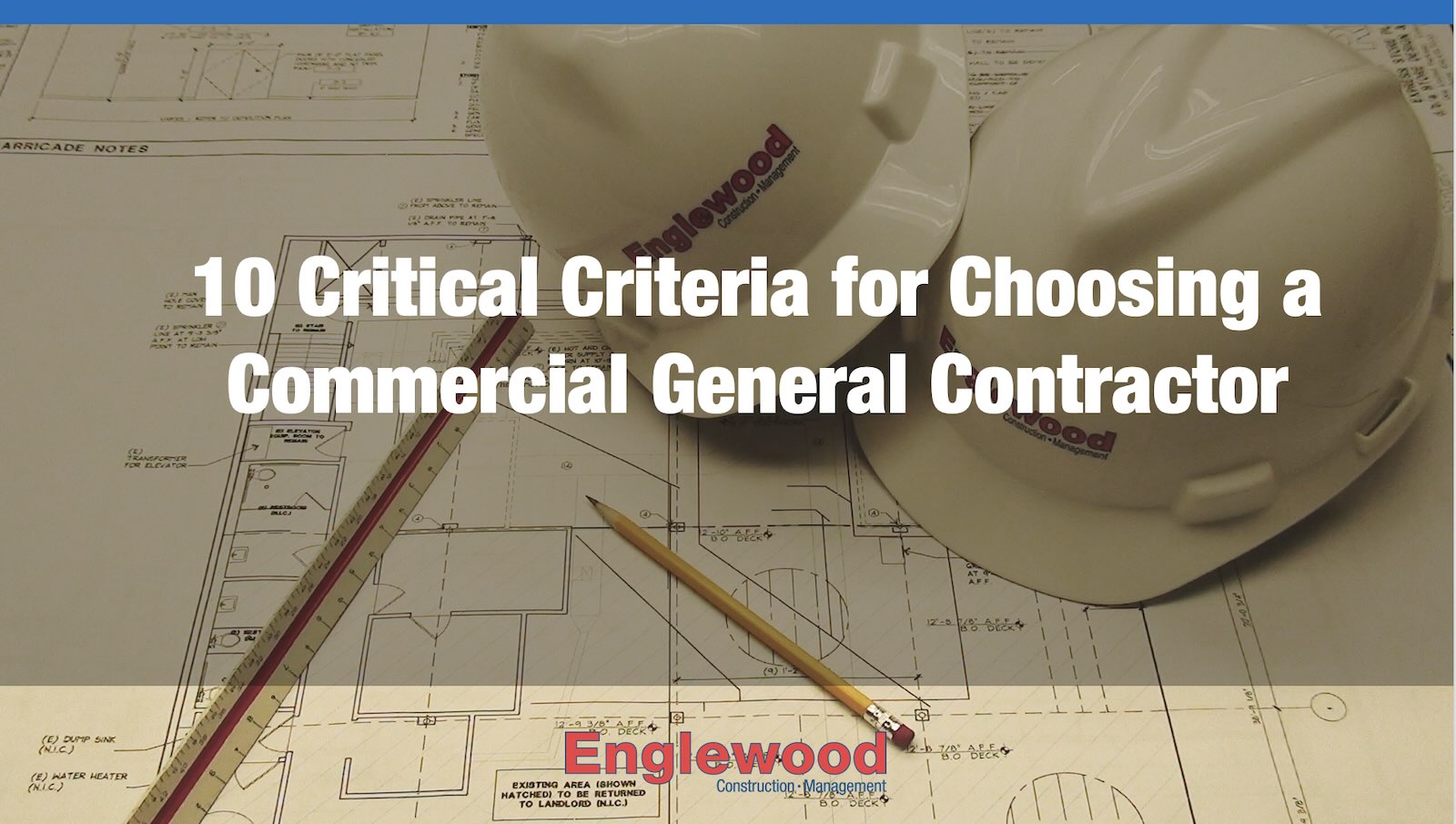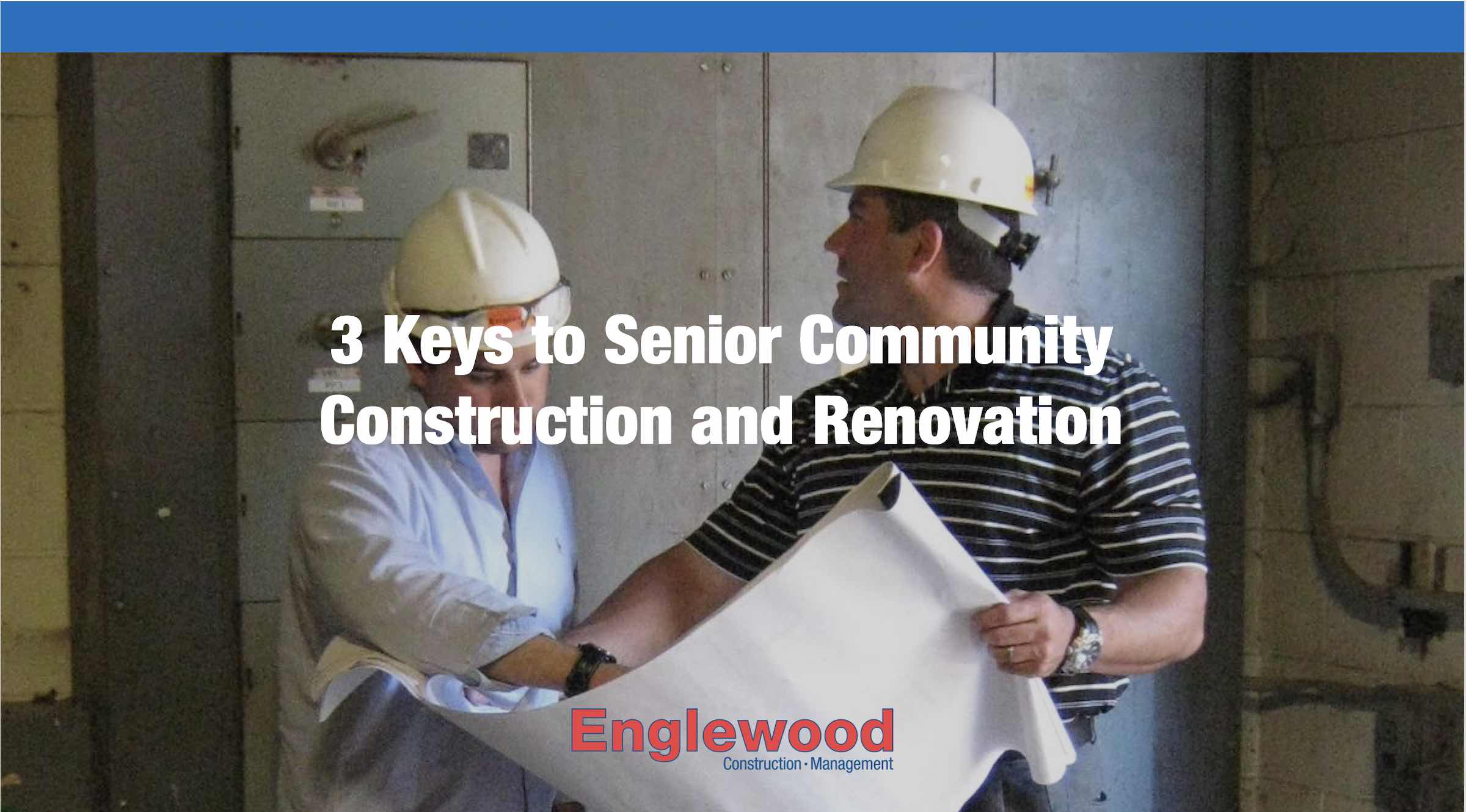3 Construction Strategies for Senior Community Housing Renovation Projects
As noted in January’s Hard Hat Chat post about commercial real estate trends shaping Englewood’s work in the year ahead, we expect 2018 will maintain the same strong momentum we’ve recently experienced working with owners and operators to update existing senior communities. What’s driving the uptick in renovation and remodeling activity in this sector? For one, with aging Baby Boomers spurring more demand than ever for quality senior living options, property owners and managers are undertaking construction projects to improve senior communities to match the bar set by new players entering the market. Additionally, many national senior housing operators are in “acquisition” mode and are boosting their portfolio by snapping up value-add properties they can remodel and put under their brand umbrella.

In both these cases, a trusted commercial contractor is an important partner to execute renovations as efficiently as possible and maximize both capital improvement and maintenance budgets. Based on our own experience and best practices, here are three commercial construction strategies for senior living community owners and operators to consider when starting a senior housing renovation project:
1. Pay special attention to amenity spaces and common areas, with an eye toward how they can be updated to reflect current demand and expectations in the local market. Amenity spaces in senior communities are high-impact areas, both in terms of enhancing the lifestyle of current residents as well as making a great first impression with prospective residents and their family members – so they are a smart investment for improvement and renovation budgets.
Overall, the trend in senior community common areas is toward open, lounge-like spaces with a high-end hospitality feel and elements like bar areas and coffee cafes that encourage social interaction. Sometimes, depending on existing spaces, transitioning gathering areas to this more modern standard can be accomplished relatively easily and inexpensively. Think about a stereotypical “bingo hall”-style common room, complete with stark walls, unappealing ceiling tiles, bare floors, fluorescent lighting and a hodgepodge of mismatched furniture. Changing those elements out for soft canned lighting, calming paint colors and coordinated décor can instantly update and refresh the space.
Alternatively, projects that entail moving walls or involve the installation of new mechanical systems are a little more involved. Still, with good planning, there’s a lot that can be done to add or improve an amenity efficiently. For example, in one recent project where we added a bar area to a senior community’s lounge, we positioned the bar to share a common wall with an existing quick-service café/snack area. That meant we could tie into existing plumbing and electrical, which ultimately reduced costs.
2. Think big picture and weigh renovation projects and maintenance needs simultaneously. We love when a client comes to us for ongoing facility management and maintenance work as well as capital improvement projects, because it means we can balance their wants with their needs to accomplish as much as we can within budget parameters.
Case in point – whenever a facility has planned maintenance work scheduled, it is smart to look at other projects on the wish list and see what can be tackled at the same time. If a contractor is already coming in to upgrade lighting to LED, it may also be a good time to switch out light fixtures for a quick cosmetic refresh. Depending on the client’s budget situation, this type of improvement could then potentially be considered a maintenance line item rather than coming out of the capital improvement bucket. Similarly, if a client is planning a renovation project of any scale, it makes sense to look at upcoming facility maintenance projects to see if any other work can be scheduled at the same time, since residents will already be somewhat disrupted by construction.
3. Take extra steps to keep residents happy when renovating an occupied senior community. There are always special considerations for a construction project in a facility that is open for business, and that is especially true with a senior housing community that residents consider their home. Not only is it critical to ensure all the appropriate construction safety precautions are in place to protect residents and their guests from any hazards associated with work taking place, but it is also imperative to schedule considerate construction work hours and follow strict daily cleanup procedures. Communication is also extremely important in this setting, which is why we always choose our project superintendents for senior community projects carefully. Residents are naturally interested in the work that is taking place, so the construction team needs to be ready to field questions and interact with residents in a way that will make the project a positive experience for everyone.
Tel: 847-233-9200 x712
Questions? Comments?
You can reach me at CTaylor@eci.build
www.EnglewoodConstruction.com



